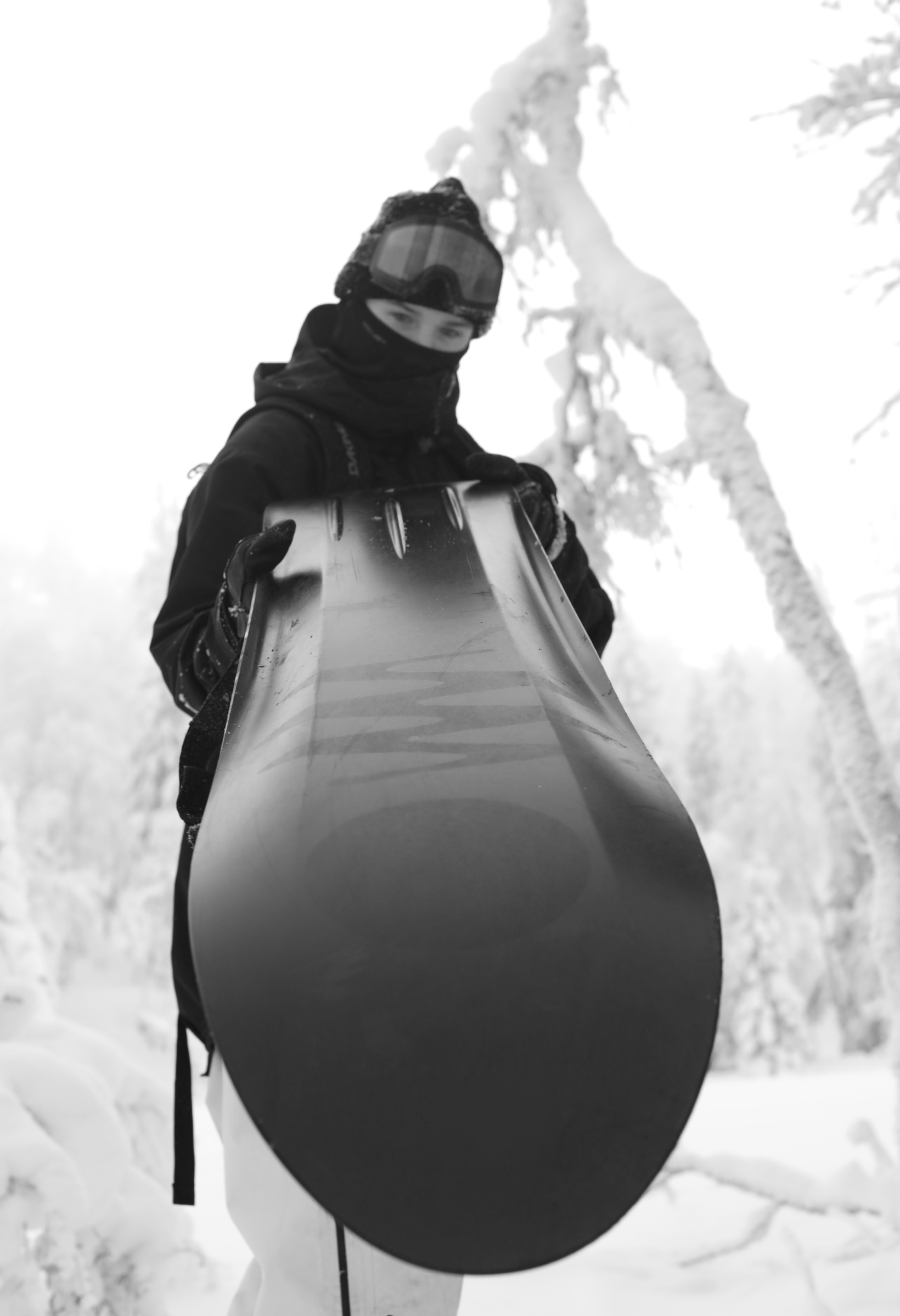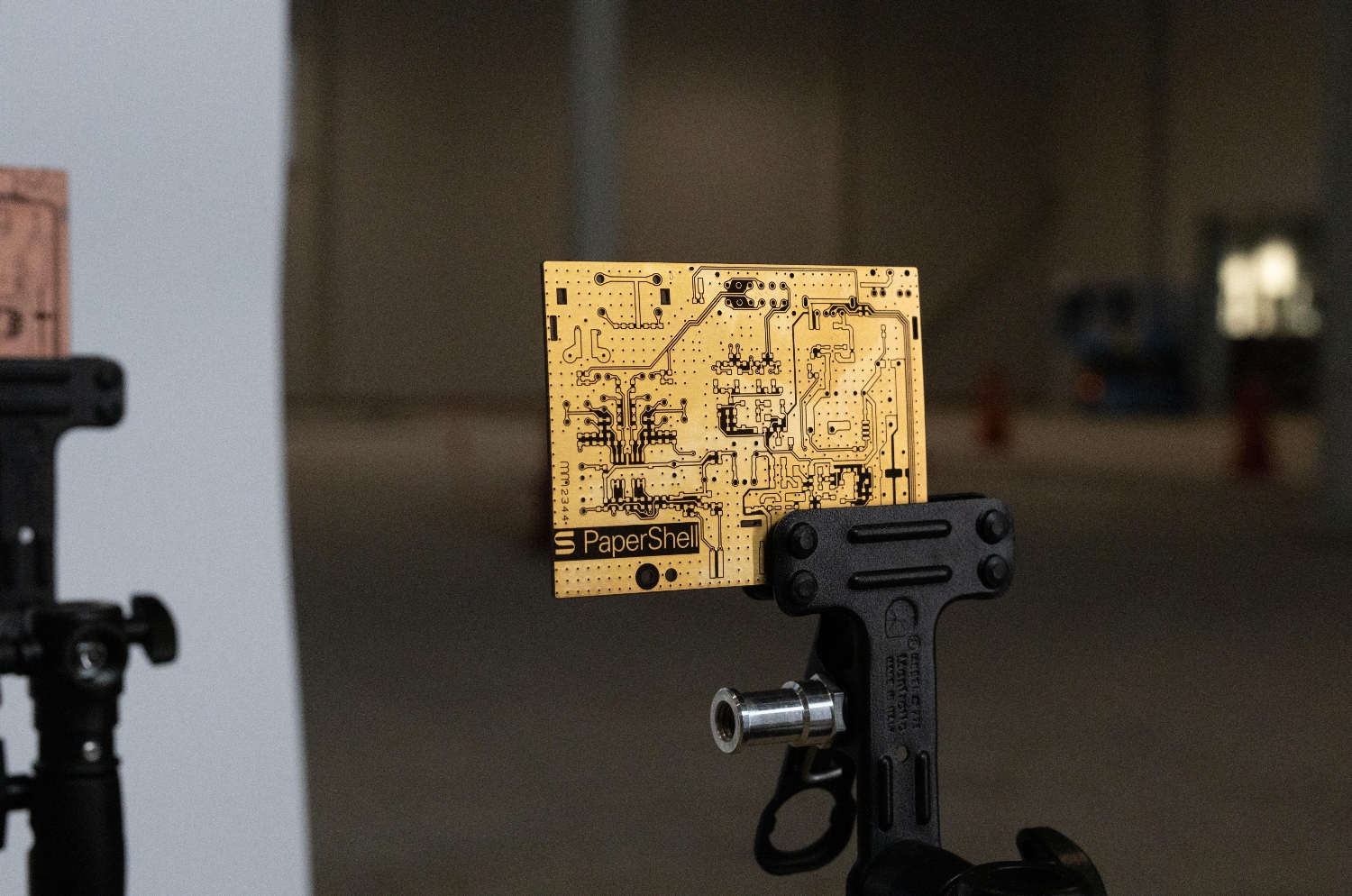[ad_1]
Skilled freeride snowboarder Cody Bramwell carves by way of the deep white powder, left-right-left-right, down the mountainside. He practices snowsurfing, a singular, bindingless type of snowboarding invented in Japan within the Nineteen Eighties.
As a substitute of specializing in pace and tips, snowsurfing is about discovering the circulate of the mountain, sustaining pace on flat sections and changing into one with the terrain. The game is greatest practiced in contemporary, uncompressed powder snow, versus crowded ski slopes.
It is becoming that the board Bramwell rides was made to have minimal affect on the pristine nature on which snow browsing relies upon. As a substitute of plastic or fiberglass, these snowsurfs are comprised of previous paper.

“I needed to problem the established order and encourage firms to go one step additional and discover various supplies,” says Vincent Skoglund, photographer and co-founder of Swedish audio tech darling Zound Industries (now Marshall Group), who launched Papersurf final yr based. Skoglund says he’s struggling to maintain up with orders for the boards, which begin at SEK 4,495 (€390).
The Snowsurfs have been constructed by PaperShell, a Stockholm-based startup that has developed a technique to convert paper waste right into a long-lasting, high-tech composite it calls “wooden steel.”
“The design potentialities are infinite”
“It’s like artwork and magic meet science and biology,” Anders Breitholtz, founder and CEO of PaperShell, tells TNW. “We created a cloth that’s enjoyable, elegant, fashionable but versatile, sturdy and round.”
PaperShell’s wooden steel can change high-impact supplies equivalent to aluminum, fiberglass and plastics. It may be clean, matte or textured. It may be flat, curved or spherical.
It’s warmth resistant (even self-extinguishing), waterproof, robust and lighter than fiberglass. It may be used to make furnishings, automotive panels, electronics, constructing facades, skateboards and, as we have already seen, snow surfboards.
“The design potentialities are virtually infinite,” says Breitholtz.


To provide the fabric, PaperShell sources craft paper comprised of waste lignin and cellulose from the wooden trade. The paper is then infused with hemicellulose, a pure polymer discovered within the cell partitions of vegetation and available as an agricultural byproduct.
“Whenever you make paper, you lose lignin and hemicellulose, that are huge waste streams – so we thought we must always incorporate these again in to make a composite.” says Breitholz.
Basically it rebuilds wooden.
Be taught from nature
Virtually the whole lot we use and eat each day depends upon supplies equivalent to steel, minerals, biomass and fossil fuels. In 2022 the materials footprint of the typical European – the quantity of uncooked supplies dug as much as meet our wants – was nearly 15 tons. That is “merely not sustainable,” because the EU stated in a latest report report.
The answer? To interrupt our linear consumption habits and rework them right into a cycle. In a round economic system, merchandise are designed to be reused. When they’re not helpful, they not grow to be waste, however a useful resource for one thing new, identical to in nature.
“Nature has advanced beautiful biointelligence over 3.8 billion years – however humanity seems to be doing its greatest to reverse it.” says Breitholz. “It’s time to work with the earth, not towards it.”
At present, most waste wooden is burned or landfilled, releasing CO2 into the air or, within the case of handled wooden, chemical substances into the soil.
If PaperShell’s materials have been burned on the finish of its life – a worst-case state of affairs – The corporate nonetheless claims that life cycle CO2 emissions are lowered by 90-98% in comparison with equal sized parts manufactured from plastic, fiber composites or metals.


Nevertheless, that is nowhere close to ok for PaperShell. The corporate desires to make use of the previous materials and convert it into biochar as fertilizer for rising new timber. They’re additionally experimenting with mycelium to interrupt down the high-tech wooden, return it to the soil and promote biodiversity.
“We educate the mycelium to interrupt down our materials. That is hardcore. That is how we must always work. If we are able to use this data, it could be loopy to not,” says Breitholz.
To make it work
Earlier than founding PaperShell in 2021, Breitholz labored as a supplies scout for big companies and analysis establishments for 20 years. His job was to uncover the following greatest sustainable supplies for professionals from automotive producers to architects.
Over the previous three years, the self-proclaimed “loopy founder” and his workforce have repeatedly examined their product with trade giants equivalent to electrical automobile producer Polestar and Italian furnishings firm Arper.
“We had to ensure it truly labored in an industrial context, so we labored with demanding prospects so we might fail quick and be taught quick,” he says Broadwood.
PaperShell has raised 20 million euros to this point and is at present in one other spherical of financing. Its board contains executives from Swedish dwelling equipment maker Electrolux, recycling large Stena Metall and design group Inside Enter.
The corporate’s pilot plant in Tibro, Sweden, has grow to be a testing floor for the fabric. Some small sequence orders have been additionally fulfilled – such because the Papersurf board. However now PaperShell is able to go one step additional.


industrialization
PaperShell has simply constructed a brand new manufacturing facility in Tibro represents a major enhance in capability in comparison with the present pilot plant – from 600 to three,2000 sq. meters of manufacturing area.
The manufacturing facility acts as Construct-to-print element manufacturing facility. It is going to use a sequence of automated press tables to type completely different shapes and designs primarily based on particular orders. The wood-metal serves as a cloth substitute for an current element – equivalent to paneling for a automotive – or for a very new product.
From flat sheets to advanced 3D shapes, PaperShell expects to have the ability to produce as much as 700,000 parts per yr within the new manufacturing facility. The corporate plans to construct a fair bigger manufacturing facility within the “close to future.”
“This materials is definitely so easy, so low-tech,” he says Broadwood. “However what actually excites me is that it has the potential to have a big impact and act as a catalyst for change throughout so many industries.”
For snowboarder Cody Bramwell, enjoyable might come first. “Cheers to Papersurf, this board is superior!” he stated after a session of powder shredding within the Scandinavian hinterland.
Try this video to see how the Papersurf was created:
[ad_2]
Supply hyperlink


